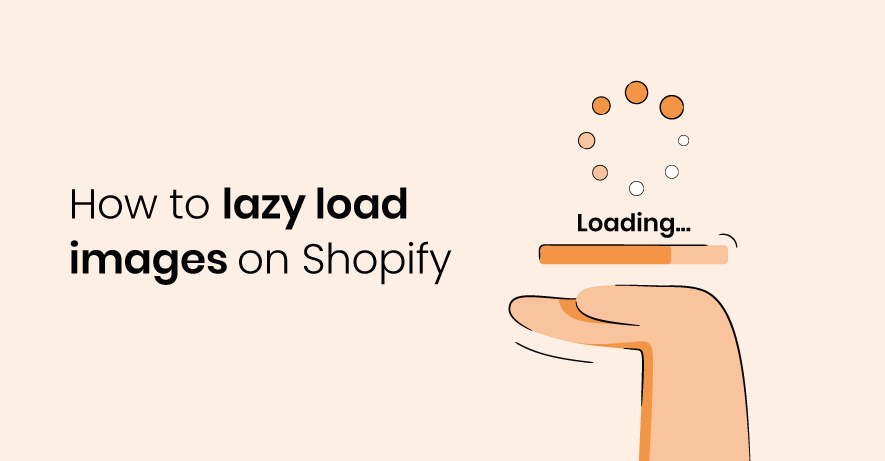Introduction
If your Shopify store feels sluggish, it might not be your internet connection — it could be your images. Images are often the heaviest part of an eCommerce page, and if they all load at once, your site speed can drop dramatically. In fact, studies show that sites without lazy loading can load up to 30% slower.Lazy loading is a simple yet powerful technique that delays loading images until they are needed — typically when they appear in the user’s viewport. This small change can have a big impact on page speed, Core Web Vitals, SEO, and conversions.
What is Lazy Loading?
Lazy loading is a web performance optimization that loads images only when they are about to be viewed. Instead of rendering all images on page load, the browser fetches images on demand.For Shopify stores, this means:
- Fewer initial HTTP requests
- Faster Time to First Byte (TTFB)
- Improved Largest Contentful Paint (LCP)
- Lower bounce rates
Lazy loading is especially important for homepages, collection pages, and product pages with dozens of high-resolution images.
Why Shopify Stores Need Lazy Loading
Even though Shopify themes like Dawn now include lazy loading by default, many older themes or custom modifications do not. Without lazy loading:
- Pages Load Slower: Every image, even those off-screen, is loaded immediately.
- Poor User Experience: Visitors waiting for images to render may leave before seeing your products.
- Lower Conversions: A 1-second delay can reduce conversions by up to 20%.
- SEO Impact: Google considers page speed in ranking. Slow sites can hurt your visibility.
For example, a store with 50+ images per page may see the page load slow by 20–30% if lazy loading is not enabled.
How to Implement Lazy Loading in Shopify
- Use a Theme with Built-In Lazy Loading
Modern themes like Dawn automatically enable lazy loading for product images. Check your theme documentation to confirm. - Use Shopify Apps or Scripts
For older themes:
- Apps like Rocket Lazy Load or Image Optimizer & Lazy Load can add lazy loading without coding.
- Custom JavaScript can implement
loading="lazy"for<img>tags.
- Optimize Above-the-Fold Images
Lazy loading is great, but don’t lazy-load the first visible images — otherwise, the page may appear blank, harming UX and LCP. - Test Your Site Speed
Use tools like:
- Google PageSpeed Insights
- GTMetrix
- Lighthouse
Check Core Web Vitals metrics before and after enabling lazy loading to measure improvements.
Real Impact: Case Studies
- Blend Commerce reported that enabling lazy loading improved Shopify page load times by 25–30%, reducing bounce rates and increasing conversions.
- Smashing Magazine analyzed a Shopify theme before and after lazy loading: the Largest Contentful Paint dropped from 2.8s to 1.9s, significantly improving SEO metrics.
Conclusion
Lazy loading is one of the easiest and most effective ways to boost your Shopify store performance. By enabling lazy loading:
- Your pages load faster
- Users have a smoother experience
- SEO rankings improve
- Conversion rates can increase
If your Shopify store still loads all images at once, you could be losing up to 30% of potential performance. Don’t let slow images slow down your business — enable lazy loading today.Check your Shopify theme or install a lazy loading app and run a speed test. Even small optimizations can lead to measurable improvements in user experience and revenue.


